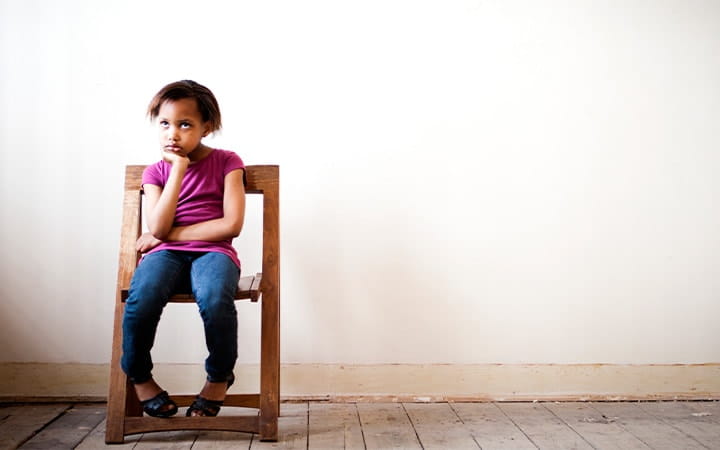5 Positive Discipline Tips to Help Kids Thrive
April 17, 2023
 University Hospitals Rainbow Babies & Children'sExperts in Children's Health
University Hospitals Rainbow Babies & Children'sExperts in Children's Health

Every parent has lost their temper at one time or another. Taking a moment for a time-out can help children and parent alike. Spanking, in particular, is a damaging form of punishment. Studies have shown that in the short term, spanking causes aggression, physical trauma, and difficulty with thinking and learning. Later in life, it can result in mental health problems and negative outcomes, from low self-esteem to troubled relationships.
Fortunately, child health experts have identified discipline techniques that work. Kimberly Burkhart, PhD, a psychologist in the Division of Developmental Behavioral Pediatrics at University Hospitals Rainbow Babies & Children’s, says, “Overall, set clear rules, warn your child of what happens when they’re broken and follow through. Try these specific tips to teach your child to listen and behave.”
The behavior: An infant or toddler touches something unsafe
The approach: Distraction
Children this age have short attention spans and can’t focus on many things at one time. You should be able to gently replace the item with something else or move the child to a new location. You may also want to make a simple statement like, “No touching that.”
Remember, teaching is better than yelling and nagging. Also, offer praise when your child is being well-behaved.
The behavior: A preschooler hits, bites or won’t share
The approach: Time out
This tactic works best with kids ages 3 and up. It allows children time to cool down. Guiding them to sit in a chair in a quiet corner also keeps things from escalating any further.
Time-outs work best when the time period isn’t too long. A good guide is one minute per year of the child’s age, but no longer than 10 minutes. Give one warning before calmly giving the time out. When it’s over, offer praise for calming down and talk about the unwanted behavior.
The behavior: A school-aged child breaks rules about devices
The approach: Logical outcomes
Say you catch your child watching videos you don’t approve of. It makes sense to take away electronic devices for a period of time as a result. Your child should know in advance what behavior is expected and what the outcome will be if the rules are broken.
Setting up a list of house rules and logical outcomes for breaking them with your child’s involvement is likely to be most effective. Logical outcomes (and house rules) don’t work if the outcomes are acceptable to the child, or if a parent “saves” the child from suffering the unpleasant outcome.
The behavior: Throwing a tantrum
The approach: Ignore it (within reason)
Toddlers throw tantrums to seek attention or get what they want. Don’t reward them. Instead, wait calmly for the moment to pass. “The exception, of course, is in the face of danger,” adds Dr. Burkhart. “If your child runs into the street during a tantrum or is otherwise at risk, grab him or her and hold tightly.”
The behavior: Repeated aggression or disrespect
The approach: Positive reinforcement
Question calmly to find underlying causes of anger and frustration. Compliment your child for following rules and being respectful. This moves the focus from the problem to the solution. If you can’t help your child control his or her behavior, Dr. Burkhart suggests talking with your child’s doctor or a mental health professional.
Dr. Burkhart adds, “It’s just as important, if not more important, to focus on building positive parent-child interactions. Building healthy attachment and bonding through child-directed play, using specific praise and modeling the behavior you want to see often reduces problematic behavior and increases postive behavior.”Related Links
University Hospitals Rainbow Babies & Children’s offers a variety of resources, tools and educational information to help parents keep their kids healthy and safe. Find more positive parenting tools here.


